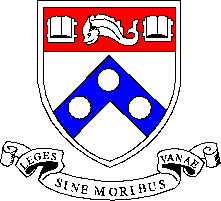
University of Pennsylvania
Department of Physics and Astronomy
High Energy Physics Seminar
The PICASSO Dark Matter Experiment
Carsten Krauss
Queens University
Abstract
First hints at the existence of dark matter date back all the way to
1937. Recent cosmological observations have solidified our picture
about the existence of dark matter as a significant constituent of
the universe. No direct evidence has been found however. The PICASSO
experiment (Project in CAnada to Search for Supersymmetric Objects)
uses a new detection technique to find direct evidence for dark
matter. The Super-heated droplet detectors used for PICASSO have a
very low response to minimally ionizing particles and therefore a
good suppression of background. The active mass is Fluorine which is
sensitive to spin-dependent interactions with dark matter particles.
The PICASSO collaboration has finished an engineering run in 2004 and
published it's results last year. This year we have started with the
installation of a 2kg active mass detector at SNO to learn about the
progress in radio-purity and test the improved detector design. This
system will enable us to increase the exposure by a factor of 100
with respect to the 2004 data.

